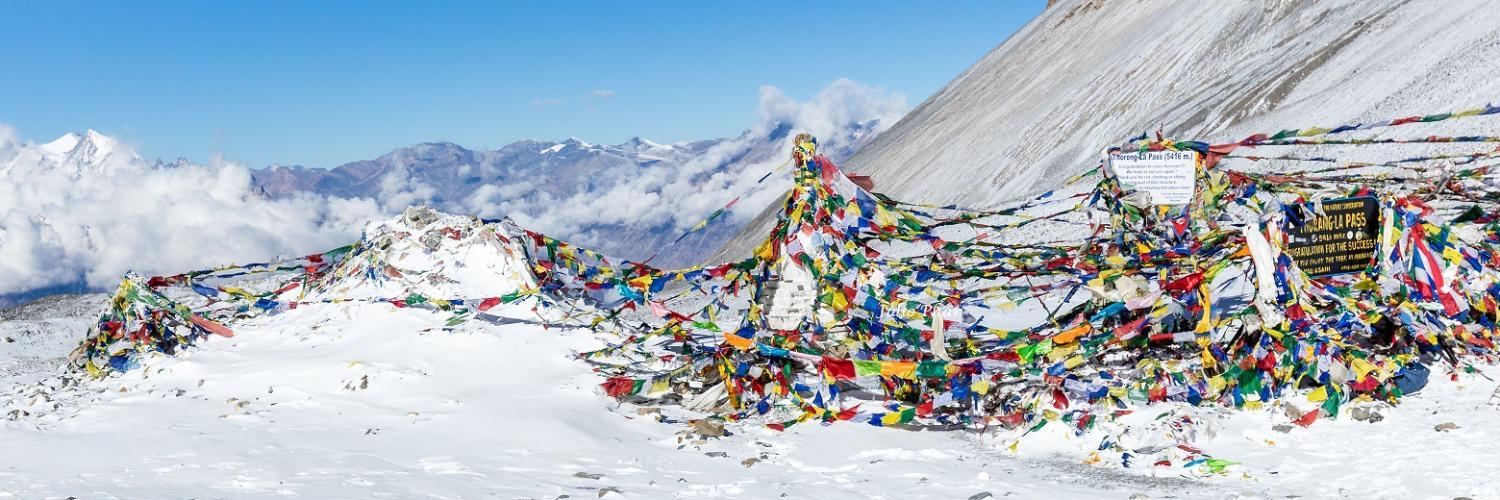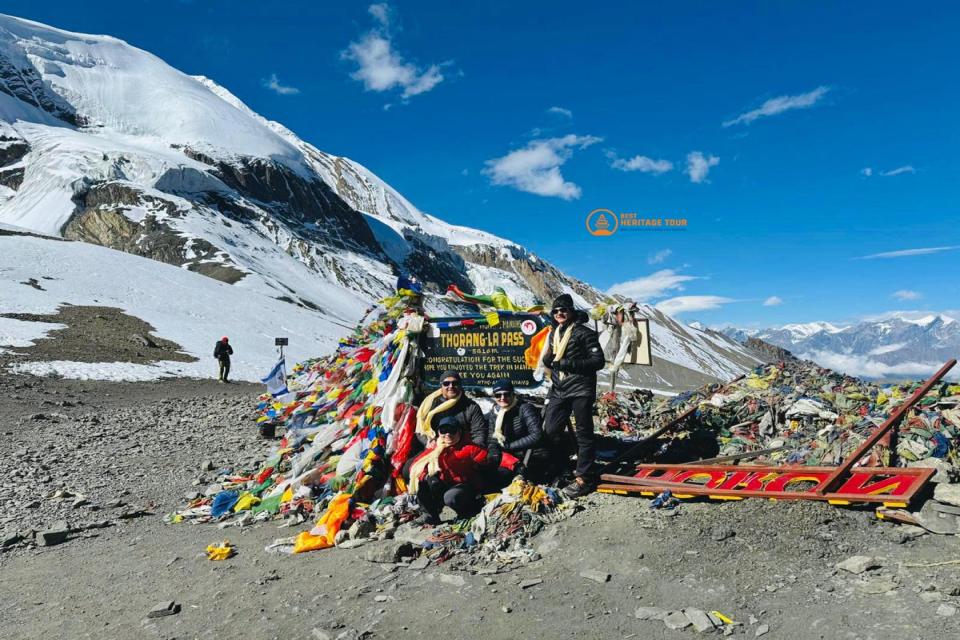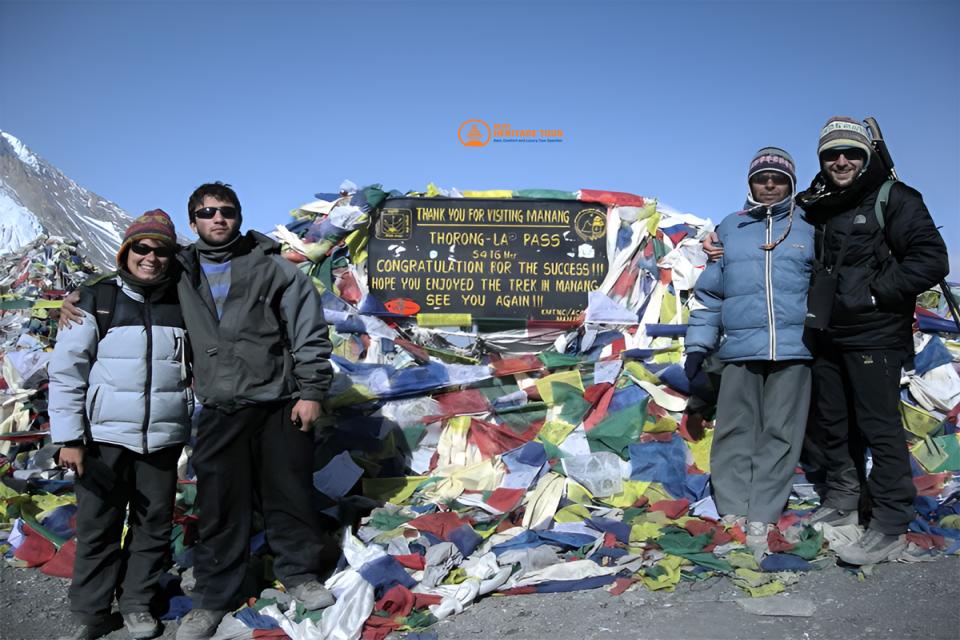The Annapurna Circuit Trek is one of the most iconic trekking routes in the world, offering breathtaking views of the Himalayas, diverse landscapes, and a glimpse into Nepal’s rich culture. For many trekkers, it’s a lifelong dream - but a common question arises: How hard is this trek? Understanding the difficulty level, terrain, altitude, and preparation requirements is crucial to ensure a safe and enjoyable experience.
This guide provides a comprehensive analysis of the Annapurna Circuit Trek’s difficulty, practical tips, and explains how Best Heritage Tour can help you navigate this adventure seamlessly, whether you are a seasoned trekker or a first-timer.
Overview of the Annapurna Circuit Trek
The Annapurna Circuit Trek spans approximately 160-230 kilometers (depending on the route) around the Annapurna Massif. It takes trekkers through:
-
Subtropical lowlands along the Marsyangdi River
-
Traditional villages and terraced fields
-
High mountain passes, including the challenging Thorong La Pass (5,416m)
-
Barren high-altitude landscapes with panoramic views of Annapurna, Dhaulagiri, Manaslu, and Machapuchare
The trek usually takes 15-21 days, depending on pace, acclimatization, and side excursions like Tilicho Lake or Muktinath.
Factors That Determine Trek Difficulty
The difficulty of the Annapurna Circuit depends on several key factors:
1. Distance and Duration
-
Daily trekking distances typically range from 10-25 km depending on terrain and acclimatization schedules.
-
Longer distances combined with high altitude can be physically demanding, requiring stamina and endurance.
2. Altitude
-
Thorong La Pass, at 5,416 meters, is the highest point on the trek.
-
Altitude sickness is a real concern; proper acclimatization and awareness of symptoms like headache, nausea, or dizziness are critical.
-
Many trekkers schedule rest/acclimatization days in Manang or Upper Pisang.
3. Terrain
-
Trails range from well-trodden paths to steep ascents and rocky sections.
-
River valleys, suspension bridges, and stone staircases are common.
-
Weather can make trails slippery, especially during the monsoon season (June-September).
4. Weather Conditions
-
Spring (March-May) and Autumn (September-November) offer the best trekking conditions.
-
Winter (December-February) brings snow and extreme cold at higher altitudes.
-
Monsoon season is not recommended due to landslides and heavy rain.
Physical Preparation for the Annapurna Circuit
While the trek is challenging, it is manageable with proper preparation:
1. Fitness Level
-
Trekkers should have moderate to high fitness levels.
-
Cardiovascular training, hiking, stair climbing, and endurance exercises help prepare your body for long days on the trail.
2. Acclimatization Strategy
-
Ascend gradually; follow the “climb high, sleep low” principle.
-
Spend 2-3 days in Manang or Pisang for proper acclimatization before Thorong La Pass.
3. Packing Essentials
-
Layered clothing for varying temperatures
-
Good-quality trekking boots and trekking poles
-
First-aid kit, sunscreen, and water purification tools
-
Sleeping bag rated for sub-zero temperatures
4. Mental Preparation
-
The trek can be mentally demanding due to isolation, long days, and challenging passes.
-
Positive mindset and flexibility with schedules are key to enjoying the experience.
Segment-by-Segment Difficulty Assessment
Breaking the trek into segments helps understand where the challenges lie:
1. Besisahar to Manang
-
Distance: ~110 km
-
Altitude Range: 760m-3,500m
-
Difficulty: Moderate
-
Trails wind through villages like Bhulbhule, Jagat, Dharapani, Chame, and Pisang.
-
Steep ascents are gradual, giving trekkers time to acclimatize.
-
Highlights: Marsyangdi River gorge, rice terraces, traditional Gurung and Manangi villages.
2. Manang to Thorong La Pass
-
Distance: ~35-40 km
-
Altitude Range: 3,500m-5,416m
-
Difficulty: Hard
-
Steep trails, rocky terrain, and thinner air make this segment challenging.
-
Thorong La Pass is the physical and mental peak of the trek.
-
Tip: Start the ascent early in the morning for safer conditions and to avoid afternoon winds or clouds.
3. Thorong La Pass to Muktinath
-
Distance: ~18 km
-
Altitude Range: 5,416m-3,800m
-
Difficulty: Moderate
-
Steep descent requires strong knees and trekking poles for support.
-
Visit the sacred Muktinath Temple, an important site for both Hindu and Buddhist pilgrims.
4. Muktinath to Tatopani
-
Distance: ~60 km
-
Altitude Range: 3,800m-1,190m
-
Difficulty: Moderate
-
Descending through Kali Gandaki Valley; hot springs at Tatopani provide relaxation for sore muscles.
-
Trails pass through beautiful villages, rice paddies, and lush forests.
5. Tatopani to Pokhara (or Nayapul)
-
Distance: ~60 km
-
Altitude Range: 1,190m-850m
-
Difficulty: Easy
-
Gentle downhill trails and valley paths; scenic views of Annapurna South and Machapuchare.
-
End of trek with a rewarding arrival in Pokhara, the adventure hub.
Common Challenges Trekkers Face
1. Altitude Sickness
-
Most common above 3,500m; symptoms can include fatigue, headache, nausea.
-
Proper acclimatization, hydration, and gradual ascent reduce risks.
2. Weather and Trail Conditions
-
Sudden snowstorms or heavy rains can make trails slippery.
-
Monsoon season increases risk of landslides.
3. Physical Fatigue
-
Long daily distances and multiple days of trekking require endurance.
-
Rest days and moderate pacing are essential.
4. Limited Medical Facilities
-
Small health posts exist, but serious emergencies require evacuation to Pokhara or Kathmandu.
-
Trekking with a guide and travel insurance is highly recommended.
Tips to Make the Annapurna Circuit Trek Easier
-
Hire a Local Guide or Porter: Reduces fatigue and provides expert trail navigation.
-
Pack Light: Only essentials; extra weight increases strain.
-
Acclimatize Properly: Don’t rush; listen to your body.
-
Hydrate and Eat Well: High-altitude energy requires adequate calories and water.
-
Use Trekking Poles: Helpful for steep ascents and descents.
Best Heritage Tour offers professional trekking packages including guides, porters, accommodation, and permits, making the trek safer and more enjoyable.
Who Can Attempt the Annapurna Circuit Trek?
-
Experienced Trekkers: Comfortable with high-altitude hiking, long distances, and rugged trails.
-
Moderate-Level Trekkers: With proper preparation, training, and acclimatization days.
-
Families and Older Trekkers: Possible with shorter itineraries, rest days, and porter support.
Why Book with Best Heritage Tour
Booking with a professional agency ensures a safe, organized, and enriching experience:
-
Customizable Itineraries: Choose your duration, pace, and side trips (like Tilicho Lake).
-
Experienced Guides and Porters: Local knowledge, support, and safety throughout the trek.
-
Accommodation and Logistics: Teahouses, meals, and transportation arranged in advance.
-
Emergency Support: Assistance for altitude sickness, injuries, or evacuation if needed.
With Best Heritage Tour, the Annapurna Circuit Trek becomes challenging but fully manageable, allowing you to enjoy the breathtaking landscapes, local culture, and Himalayan adventure safely.
Conclusion
The Annapurna Circuit Trek is a moderately to highly challenging trek depending on your experience, fitness, and preparation. The trek’s difficulty arises from distance, altitude, terrain, and weather, but with proper training, acclimatization, and guided support, it is achievable for a wide range of trekkers.
For a safe, seamless, and rewarding journey, book your Annapurna Circuit Trek with Tilicho Lake through Best Heritage Tour:
Phone: +977-9851149197 / +977-9810043046
Email: info@bestheritagetour.com / bestheritagetour@gmail.com
Booking & Info: www.bestheritagetour.com
Office: Thamel Marg, Kathmandu, Nepal
Conquer the Annapurna Circuit safely, enjoy the Himalayan panoramas, and create memories that will last a lifetime!
Author: Best Heritage Tour
Date: 27th August, 2025



